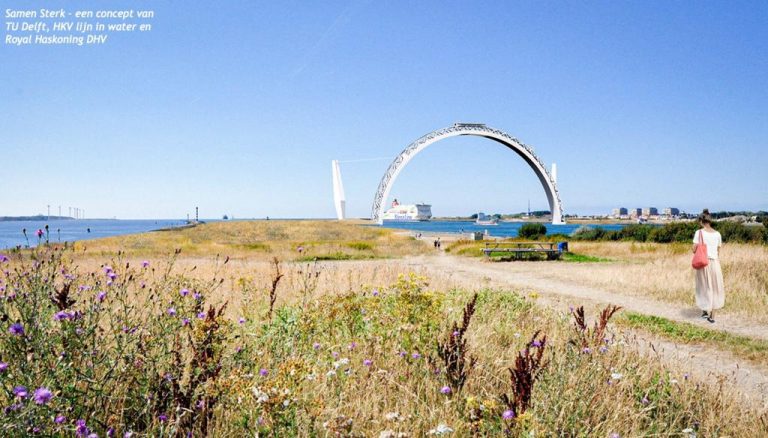Unconventional coastal protection proposal
TU Delft, HKV lijn in water and RoyalHaskoning DHV have presented a new plan to protect the southwest of the Netherlands against sea level rise.

Impression of the Holland barrier at Hoek van Holland. (Illustration: Ties Rijcken and Koen Meijman)
The conventional approach would mean significant dike reinforcements for the entire area between Biesbosch and Hoek van Holland. For a sea level rise of 50 centimetres, that would have to cost about EUR 3 billion. The newly presented alternative is a second storm surge barrier, the ‘Holland barrier’, which should be built in front of the current Maeslant barrier at Hoek van Holland. The Holland barrier would also require three super pumping stations to discharge river water. Among other things, the plan would safeguard Rotterdam from higher sea dykes.
“The question is at what sea level rise will this become the cheaper option”, says TU Delft researcher and publicist dr.ir. Ties Rijcken. “We would like to investigate that further.” The plan was published in the Dutch newspaper NRC (in Dutch) on 12 October called ‘We moeten ons juist niet terugtrekken voor de stijgende zeespiegel.’ (‘We should not retreat in the face of rising sea levels’.)
Even more than the Maeslant barrier, when it closes once a year, the Holland barrier is a potential tourist attraction. Because when the barrier is up, which it will be most of the time, visitors can take a lift along the edge of the arch to the terrace on top. This offers a unique view of coast, dunes and waterworks. (JW)
Do you have a question or comment about this article?
s.m.bonger@tudelft.nl

Comments are closed.